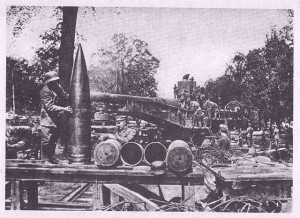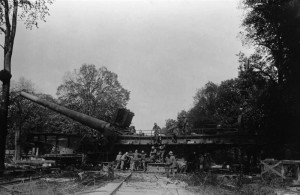17th March 1918 Sunday
St. Patrick’s Day Goes With A Bang!
All material produced or reproduced here and throughout this work is the sole copyright of the author and the family of Doctor D.C.M. Page MC.
“Whilst I was visiting my friends of the 13th R.W.F. in Erquingham on Sunday 17th March, the Huns started shelling the place with nasty 15” high velocity shells. It was distinctly nasty whilst it lasted. He sent over six altogether, and managed to do a lot of damage to the village besides killing and wounding a number of our soldiers and civilians. I attended to several of the wounded. Several houses were smashed up, and a 4.5 limber was blown up by a direct hit in the main street, the horses and men being killed. Three motor ambulances were wrecked. The civilian population were in an awful state, and were seen rushing out of the village terror-stricken. The enemy did a lot of heavy shelling all around us all day, and at night I was called out to Windy Corner to attend to some wounded men. One was dead, but the others were alive, though very severely wounded. After dressing their wounds I got them away in an ambulance car, and was glad to leave a most uncomfortable spot, for shells were exploding all the time not too far off.”
The German 38cm high velocity shell was indeed a beast of a thing. Each one weighed in at a colossal 760 kgs and had a range of between 23 and 38 kilometres. Originally intended for the large guns of a battleship, their use was realised on the Western Front. Where possible these naval guns had permanent emplacements but then adapted to be used mounted on a railway truck, giving mobility to the dreadful weapon.
To send our man down to Windy Corner some 20 kms to the south west must have meant that senior medical help was in short supply down there, but Douglas was able to do his bit.

German artillery troops preparing the monster 38 cm gun clearly showing the size of a shell.
By Unknown – photo WW I, Public Domain, https://commons.wikimedia.org/w/index.php?curid=2986020

The rail mounted 38 cm SK L/45 known as the Langer Max high velocity cannon.
By Bundesarchiv, Bild 102-00153 / CC-BY-SA 3.0, CC BY-SA 3.0 de, https://commons.wikimedia.org/w/index.php?curid=5478715
Find out about our connection with Dr Page and an introduction to his diary here